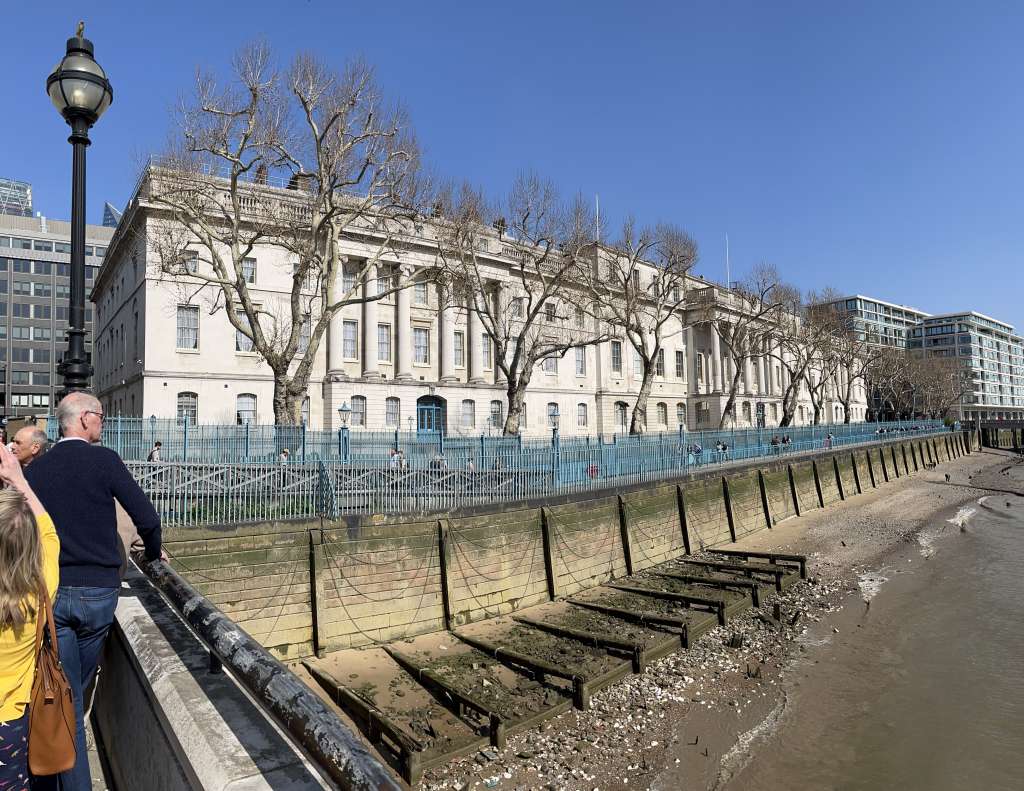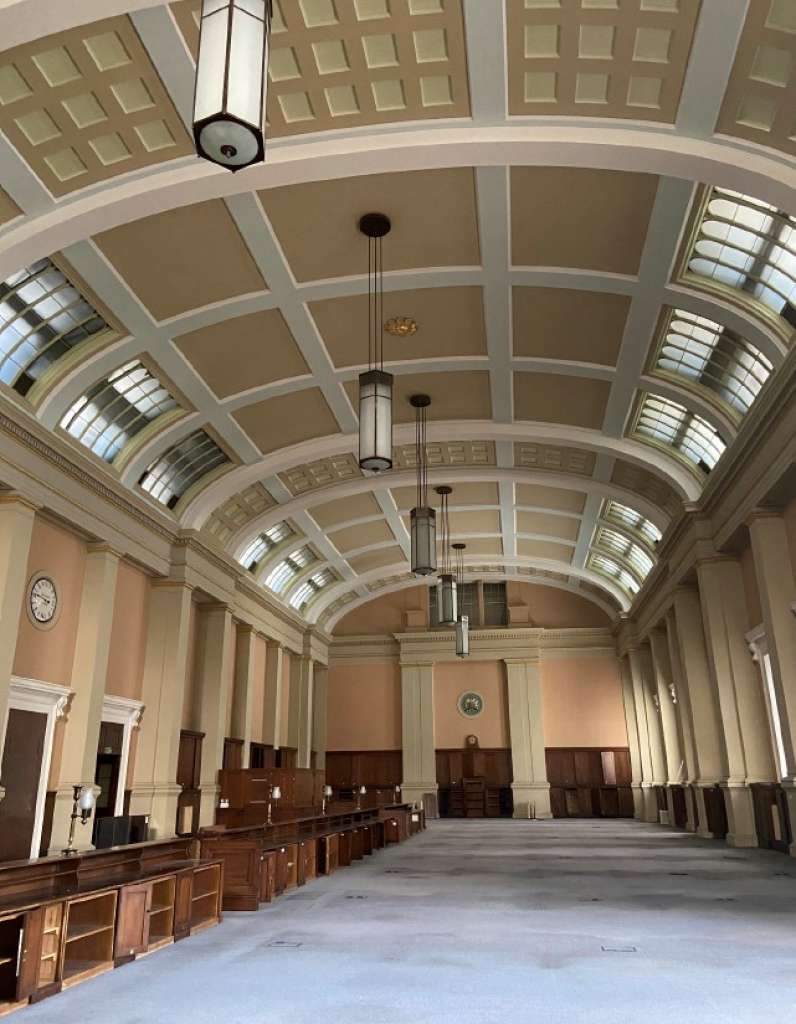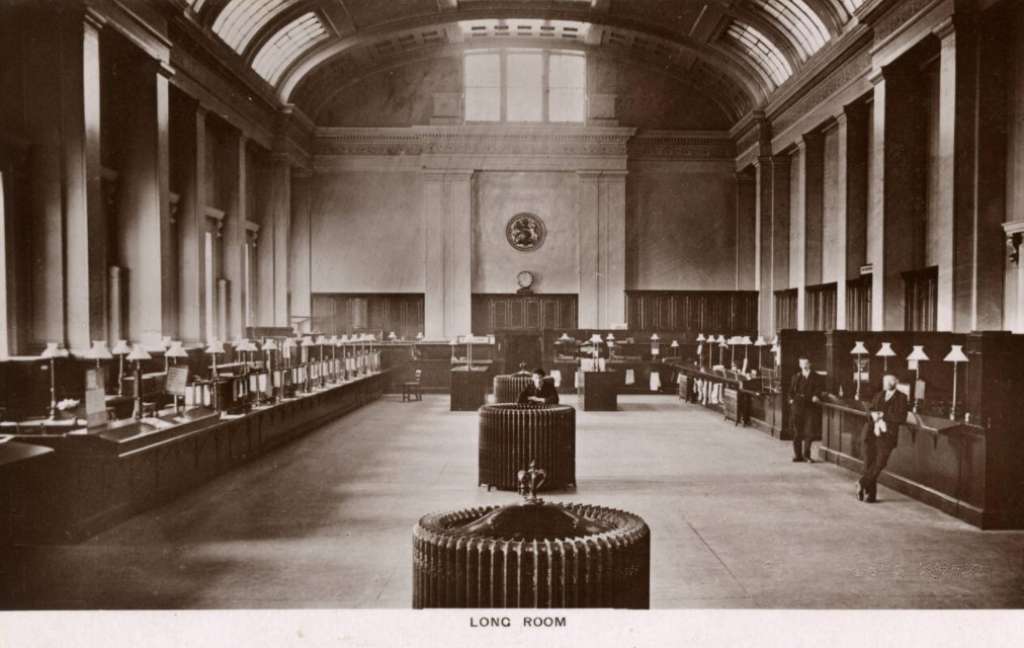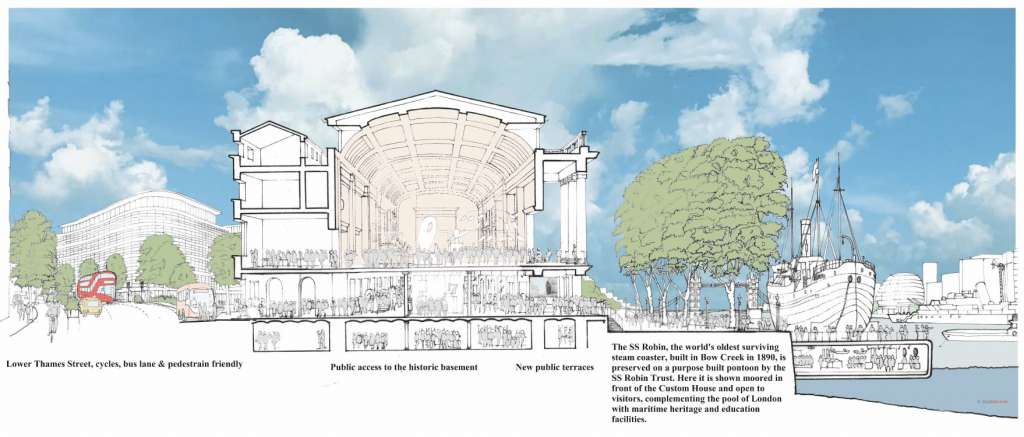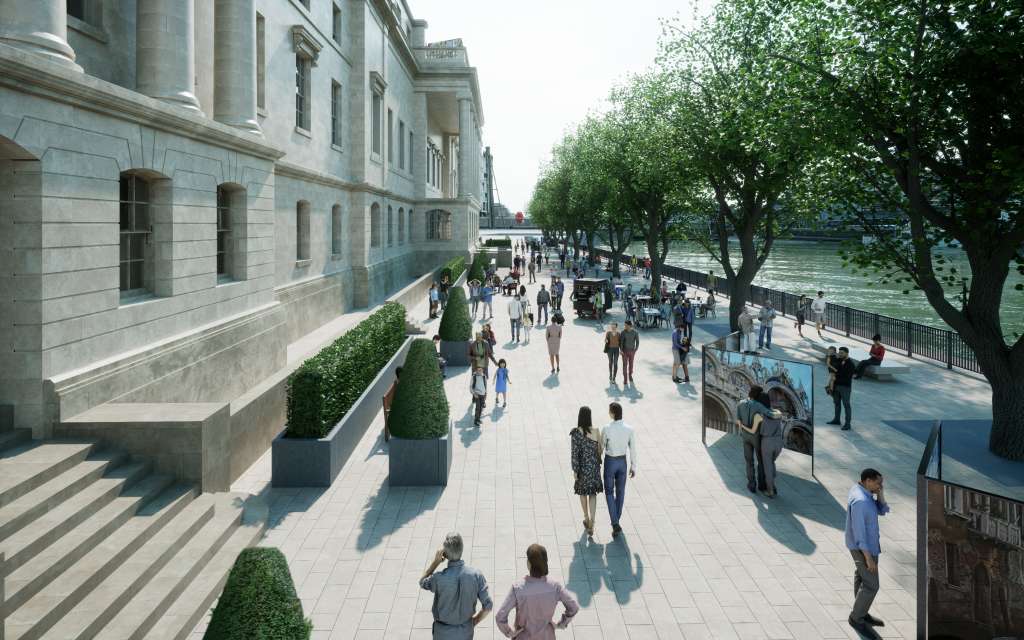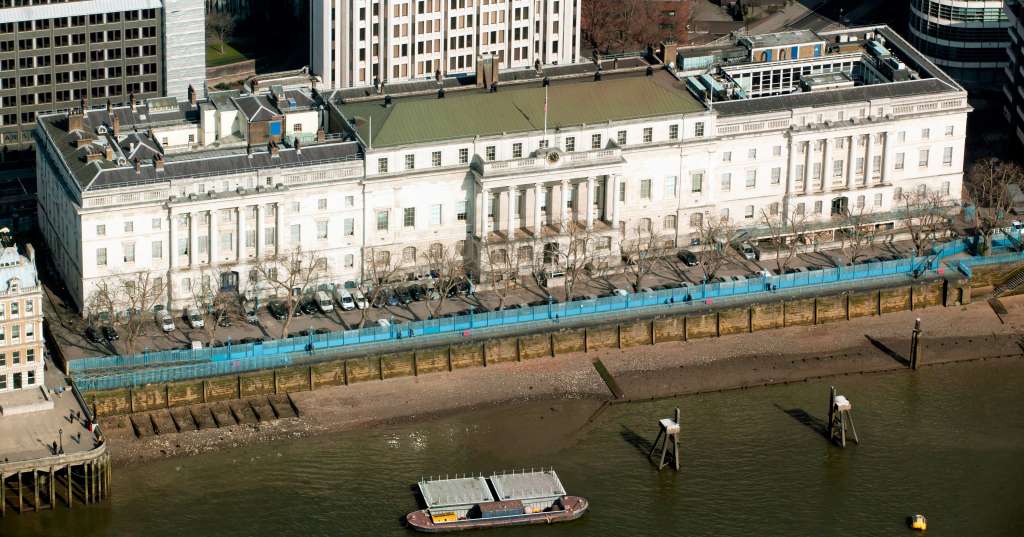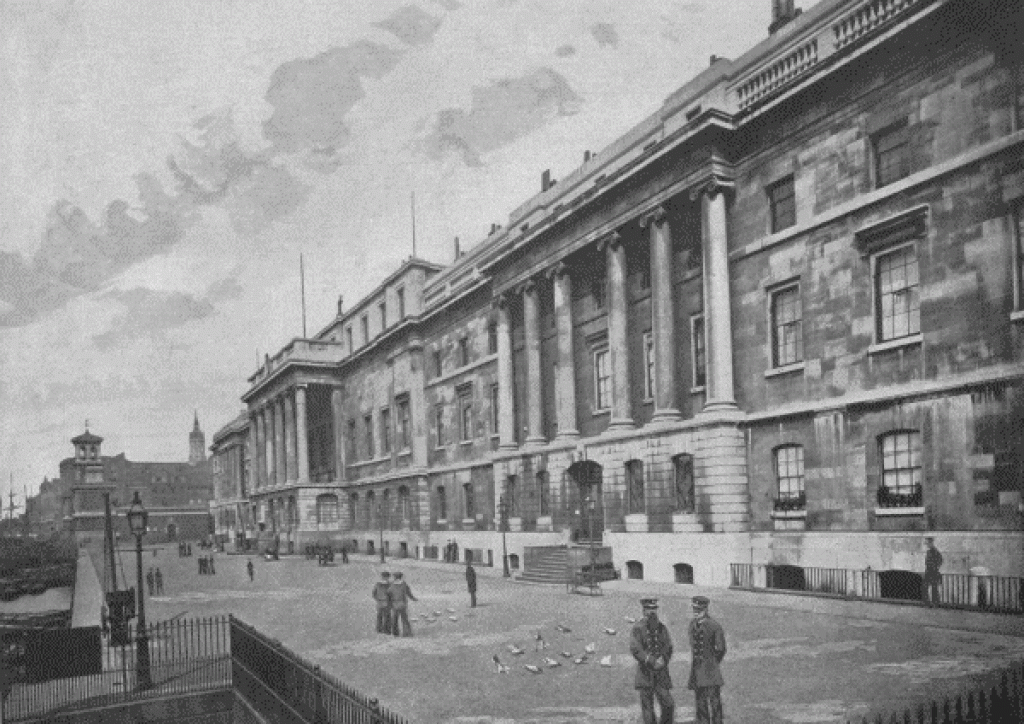PRESS RELEASE: Secretary of state throws out controversial hotel plans for Thames historic landmark
6th July 2022
The Planning Inspectorate has rejected highly contested plans to convert and extend London’s Custom House and quayside into a luxury hotel complex. The decision follows a three year campaign led by the Georgian Group and SAVE Britain’s Heritage culminating in a public inquiry in February 2022.
In his decision published on 30th June, Planning Inspector Mr Griffiths concluded that the plans by Cannon Capital Developments Ltd & Global Gem Hotels Ltd should be refused on heritage and planning policy grounds. He states that the hotel scheme posed a severe degree of harm to the Thameside landmark in spite of the purported public benefits of the scheme, concluding that: “The harm that would be caused to the significance of the building in producing these public benefits would be too great.”
He added that: “alterations to accommodate a viable use would lead to an unacceptable loss of significance,” and that, “If the proposal has to take the form it takes to make it viable, and that is what the evidence suggests, then the burden on the significance of the Custom House is, in my view, too great.”
SAVE supported the Georgian Group who took part in the inquiry as a Rule 6 Party fighting the plans alongside the Corporation of London. Our main concern was that the proposed hotel scheme would not provide the degree and perpetuity of public access that are necessary to preserve the significance of the heritage asset which derives so greatly from its historic public use. Public access to the Custom House’s interior (including the Long Room) and to the broad Riverside Terrace is critical to securing the City Corporation’s vision for regenerating the Riverside. Alec Forshaw represented SAVE at the public Inquiry – see our submission here.
SAVE published an alternative vision with architect John Burrell in October 2020 illustrating how the Custom House could be given a more public role. Included in the report is a cross section drawing by John Burrell showing the Long Room opened up for public events and new connections created between the lower floors and vast basements. New public space on the River Thames is transformed with the historic ship SS Robin moored alongside and open to visitors. See our alternative vision here.
We also supported The Georgian Group’s alternative proposals for reusing the building, which focused on protecting the buildings historic fabric and plan form, as well as and prioritising full and unfettered public access. The scheme proposed a mixture of office spaces in the eastern and western wings, with public exhibition spaces in the central body, including the grand 190ft Long Room. See visualisations of the Georgian Group’s plans here.
Henrietta Billings, director of SAVE Britain’s Heritage, says: “This decision paves the way for a new future for this landmark public building and quayside, one which celebrates its history and heritage, and throws open its doors to the people of London once again. Both alternative schemes by SAVE and the Georgian Group show how this can be done.”
Marcus Binney, executive president of SAVE Britain’s Heritage, says: “Our concern from the off has been not only to find a sympathetic and lively new use for the Custom House, one of the hidden treasures of the Thames, but to secure public access in perpetuity to the magnificent river terrace. This terrace has a breath-taking view of Tower Bridge and the Pool of London and has the potential to be one of the City of London’s most attractive and sunniest public spaces, from dawn to dusk.”
The plans had drawn strong objections from numerous other heritage groups including the London and Middlesex Archaeological Society (LAMAS), the Society for the Protection of Ancient Buildings (SPAB), and Historic Buildings & Places (formerly Ancient Monuments Society). Concerns regarding the plans were also published in a detailed article in Spitalfields Life.
History of The Custom House
The Custom House has served for hundreds of years as the headquarters of HM Customs and Excise, a government organisation with its own romantic and often secret history of fast-moving cutters, intercepting pirates and smugglers stretching back to the 1690s. HM Customs claims to be the oldest law enforcement agency in the world, with the first recorded Customs Duty dating from 743AD.
A custom house has stood on this site since medieval times. The Elizabethan Custom House, dating from 1559, was built of redbrick with octagonal towers reminiscent of St James’s Palace. Destroyed in the Great Fire of London in 1666, it was the first building King Charles II proposed for rebuilding, giving the great Sir Christopher Wren his first commission in London.
Wren’s superb building, which contained a magnificent Long Room, was gutted by a savage fire and was rebuilt by Thomas Ripley in 1718-25, but was destroyed again by fire in 1814. Fire was a constant danger due to the flammable goods (often confiscated) stored in the building, most notably gunpowder and spirits.
In 1817, rebuilding was entrusted to David Laing, a pupil of Sir John Soane (architect of the Bank of England), who produced a magnificent folio volume illustrating his grandiose plans. However, his failure to supervise the contractor resulted in one of the great corruption scandals of the age and destroyed Laing’s reputation.
In 1825, seven years after completion, the centre of the façade collapsed, bringing down a large part of the Long Room including Laing’s elegant saucer-domed ceiling.
The centrepiece was then rebuilt by Sir Robert Smirke, architect of the British Museum, with Ionic columns and a barrel-vaulted Long Room behind. Rows of customs clerks would deal with merchants, ships' captains and brokers in clearing goods and ensuring tariffs were safely collected.
In 2001, the Custom House was included in the Mapeley STEPS PFI deal, which saw around two thirds of the UK tax and customs estate sold off to a Bermuda based property company for £370m, and then leased back to the government under a 20 year agreement.
ENDS
Notes to editors:
1. Read SAVE’s full submission to the Inquiry here.
2. See here for our previous press release on the campaign from February 2022, including a more detailed history of the Custom House.
3. See SAVE’s alternative vision by John Burrell from October 2020 here.
4. For more information contact SAVE Britain's Heritage at office@savebritainsheritage.orgor 020 7253 3500.
5. SAVE Britain’s Heritage is a strong, independent voice in conservation that fights for threatened historic buildings and sustainable reuses. We stand apart from other organisations by bringing together architects, engineers, planners and investors to offer viable alternative proposals. Where necessary, and with expert advice, we take legal action to prevent major and needless losses.

